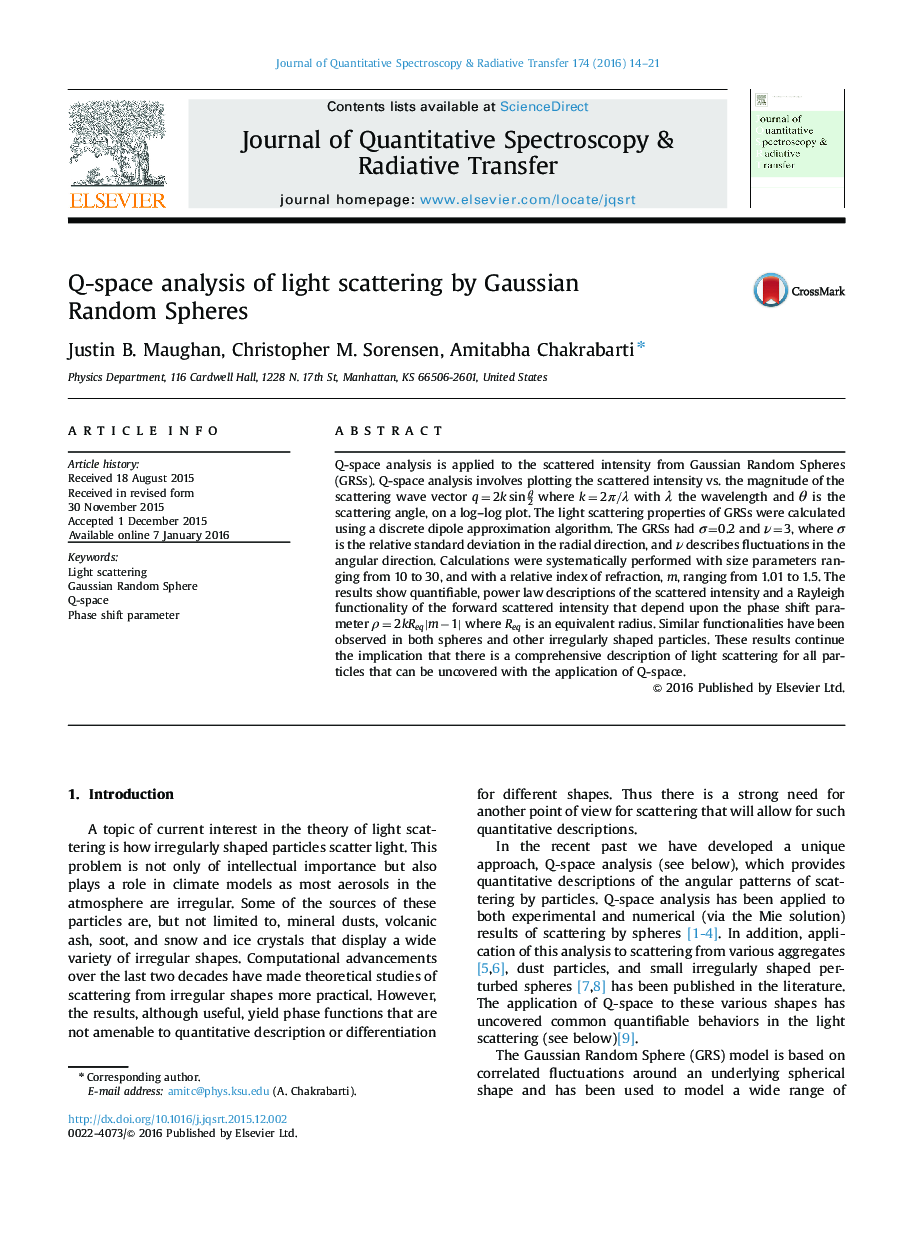| Article ID | Journal | Published Year | Pages | File Type |
|---|---|---|---|---|
| 5427718 | Journal of Quantitative Spectroscopy and Radiative Transfer | 2016 | 8 Pages |
Abstract
Q-space analysis is applied to the scattered intensity from Gaussian Random Spheres (GRSs). Q-space analysis involves plotting the scattered intensity vs. the magnitude of the scattering wave vector q=2ksinθ2 where k=2Ï/λ with λ the wavelength and θ is the scattering angle, on a log-log plot. The light scattering properties of GRSs were calculated using a discrete dipole approximation algorithm. The GRSs had Ï=0.2 and ν=3, where Ï is the relative standard deviation in the radial direction, and ν describes fluctuations in the angular direction. Calculations were systematically performed with size parameters ranging from 10 to 30, and with a relative index of refraction, m, ranging from 1.01 to 1.5. The results show quantifiable, power law descriptions of the scattered intensity and a Rayleigh functionality of the forward scattered intensity that depend upon the phase shift parameter Ï=2kReq|mâ1| where Req is an equivalent radius. Similar functionalities have been observed in both spheres and other irregularly shaped particles. These results continue the implication that there is a comprehensive description of light scattering for all particles that can be uncovered with the application of Q-space.
Related Topics
Physical Sciences and Engineering
Chemistry
Spectroscopy
Authors
Justin B. Maughan, Christopher M. Sorensen, Amitabha Chakrabarti,
